-
Membership
Membership
Anyone with an interest in the history of the built environment is welcome to join the Society of Architectural Historians -
Conferences
Conferences
SAH Annual International Conferences bring members together for scholarly exchange and networking -
Publications
Publications
Through print and digital publications, SAH documents the history of the built environment and disseminates scholarship -
Programs
Programs
SAH promotes meaningful engagement with the history of the built environment through its programsMember Programs
-
Jobs & Opportunities
Jobs & Opportunities
SAH provides resources, fellowships, and grants to help further your career and professional life -
Support
Support
We invite you to support the educational mission of SAH by making a gift, becoming a member, or volunteering -
About
About
SAH promotes the study, interpretation, and conservation of the built environment worldwide for the benefit of all
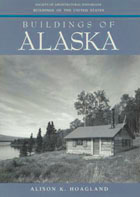
Buildings of Alaska
Alison K. Hoagland (1993)
Buildings of Alaska traces Alaska’s architecture from the earliest dwellings made of sod, whalebone, and driftwood to the glass and metal skyscrapers of modern-day Anchorage. Focusing on the various cultural traditions that have helped shape the state’s architecture, the volume also explores how Alaska’s buildings reflect Alaskans’ attempts to adapt to the unique conditions of their environment.
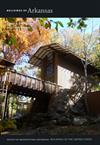
Buildings of Arkansas
Cyrus Sutherland. With Gregory Herman, Claudia Shannon, Jean Sizemore, and Jeannie M. Whayne (2018)
From Fayetteville, Little Rock, and Hot Springs to Jonesboro, El Dorado, Arkadelphia, Texarkana, and scores of places in between, the latest volume in the Buildings of the United States series provides the most comprehensive, authoritative, and up-to-date guide to the architecture of Arkansas. The result of a lifetime's research and fieldwork by the esteemed historian and preservationist Cyrus A. Sutherland, this book captures the range and richness of the state's buildings and landscapes, whose stories can prove as fascinating and gripping as a novel's plotline.
Cyrus Sutherland. With Gregory Herman, Claudia Shannon, Jean Sizemore, and Jeannie M. Whayne (2018)
From Fayetteville, Little Rock, and Hot Springs to Jonesboro, El Dorado, Arkadelphia, Texarkana, and scores of places in between, the latest volume in the Buildings of the United States series provides the most comprehensive, authoritative, and up-to-date guide to the architecture of Arkansas. The result of a lifetime's research and fieldwork by the esteemed historian and preservationist Cyrus A. Sutherland, this book captures the range and richness of the state's buildings and landscapes, whose stories can prove as fascinating and gripping as a novel's plotline.
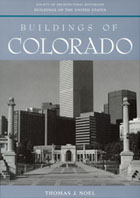
Buildings of Colorado
Thomas J. Noel (1997)
Buildings of Colorado charts the architectural history of Colorado – the nation’s highest state – from the eastern High Plains to the Rocky Mountain backbone that melts into the canyons of the west. Both a historical resource and a quick-reference guidebook, this volume reflects the remarkable topographical diversity of the state, a full one-third of which is designated as federal land.
Thomas J. Noel (1997)
Buildings of Colorado charts the architectural history of Colorado – the nation’s highest state – from the eastern High Plains to the Rocky Mountain backbone that melts into the canyons of the west. Both a historical resource and a quick-reference guidebook, this volume reflects the remarkable topographical diversity of the state, a full one-third of which is designated as federal land.
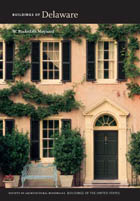
Buildings of Delaware
W. Barksdale Maynard (2008)
Buildings of Delaware is the first book to document the state's architectural history from all periods. The volume covers buildings of many styles, types, and materials, from grand mansions to vernacular structures, and from urban to rural settings.
W. Barksdale Maynard (2008)
Buildings of Delaware is the first book to document the state's architectural history from all periods. The volume covers buildings of many styles, types, and materials, from grand mansions to vernacular structures, and from urban to rural settings.
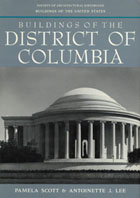
Buildings
of the District of Columbia
Pamela Scott & Antoinette J. Lee (1993)
The public architecture of Washington, D.C. is well known throughout the world. The Capitol, the White House, and other major monuments are familiar to millions of people who have never visited the city. Less familiar are many notable public and private buildings located in the central city and scattered throughout Washington’s residential neighborhoods, ranging from the eighteenth-century port city of Georgetown to the mid-twentieth-century urban renewal area known as the Southwest Quadrant.
Pamela Scott & Antoinette J. Lee (1993)
The public architecture of Washington, D.C. is well known throughout the world. The Capitol, the White House, and other major monuments are familiar to millions of people who have never visited the city. Less familiar are many notable public and private buildings located in the central city and scattered throughout Washington’s residential neighborhoods, ranging from the eighteenth-century port city of Georgetown to the mid-twentieth-century urban renewal area known as the Southwest Quadrant.
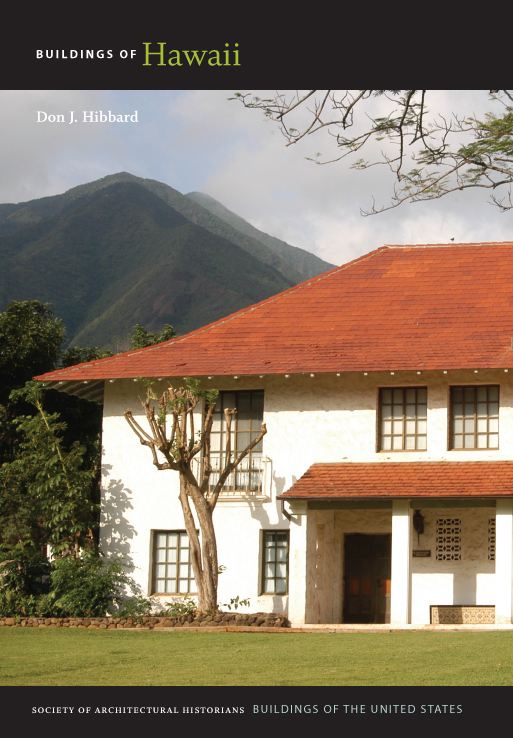
Buildings of Hawaii
Don J. Hibbard (2011)
Buildings of Hawaii presents the architecture of the six major islands in the Hawaii chain. The first in-depth examination of the architecture of the Islands, the book covers structures from the early nineteenth century through the first decade of the new millennium. Included are Japanese temples, Chinese society halls, the only royal palaces in the United States, and vernacular single-wall building traditions of the plantation period.
Don J. Hibbard (2011)
Buildings of Hawaii presents the architecture of the six major islands in the Hawaii chain. The first in-depth examination of the architecture of the Islands, the book covers structures from the early nineteenth century through the first decade of the new millennium. Included are Japanese temples, Chinese society halls, the only royal palaces in the United States, and vernacular single-wall building traditions of the plantation period.
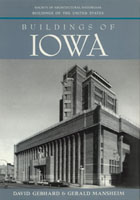
Buildings
of Iowa
David Gebhard & Gerald Mansheim (1993)
Buildings of Iowa traces Iowa’s architecture from the earliest Native American influences to the present. The image of Iowa as the breadbasket and agricultural center of the nation often overlooks the unity of urban and rural that is reflected in Iowa’s buildings and landscape.
David Gebhard & Gerald Mansheim (1993)
Buildings of Iowa traces Iowa’s architecture from the earliest Native American influences to the present. The image of Iowa as the breadbasket and agricultural center of the nation often overlooks the unity of urban and rural that is reflected in Iowa’s buildings and landscape.
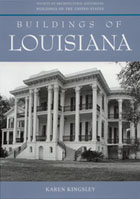
Buildings of Louisiana
Karen Kingsley (2003)
Buildings of Louisiana provides a comprehensive guide to Louisiana’s built environment. Organized by parish, it begins with New Orleans and moves on to cities, towns, and rural areas in each of eleven regions around the state. It encompasses architecture in the broadest sense, from Native American burial mounds to nineteenth-century plantations to the striking twentieth-century industrial landscape along the lower Mississippi.
Karen Kingsley (2003)
Buildings of Louisiana provides a comprehensive guide to Louisiana’s built environment. Organized by parish, it begins with New Orleans and moves on to cities, towns, and rural areas in each of eleven regions around the state. It encompasses architecture in the broadest sense, from Native American burial mounds to nineteenth-century plantations to the striking twentieth-century industrial landscape along the lower Mississippi.
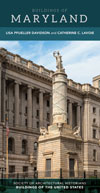
Buildings of Maryland
Lisa Pfueller Davidson and Catherine C. Lavoie (2022)
Buildings of Maryland surveys over 500 representative sites, from tobacco plantations worked by enslaved laborers to free Black communities, from maritime settlements along the Chesapeake to traces of coal mining and railroad development across the mountains, and from row house neighborhoods and streetcar suburbs to well-known modernist planned communities. In this accessible guidebook, readers will encounter a wide range of places—the State House and the Basilica of the Assumption, the Chesapeake Bay Maritime Museum and the Harriet Tubman Underground Railroad Visitor Center, the U.S. Naval Academy and Oriole Park at Camden Yards, Columbia New Town and the Susquehanna Museum, Old Greenbelt and the Clara Barton House, Catoctin Mountain Park and Antietam National Battlefield—that chart the state’s history and rich architectural legacy.
Lisa Pfueller Davidson and Catherine C. Lavoie (2022)
Buildings of Maryland surveys over 500 representative sites, from tobacco plantations worked by enslaved laborers to free Black communities, from maritime settlements along the Chesapeake to traces of coal mining and railroad development across the mountains, and from row house neighborhoods and streetcar suburbs to well-known modernist planned communities. In this accessible guidebook, readers will encounter a wide range of places—the State House and the Basilica of the Assumption, the Chesapeake Bay Maritime Museum and the Harriet Tubman Underground Railroad Visitor Center, the U.S. Naval Academy and Oriole Park at Camden Yards, Columbia New Town and the Susquehanna Museum, Old Greenbelt and the Clara Barton House, Catoctin Mountain Park and Antietam National Battlefield—that chart the state’s history and rich architectural legacy.
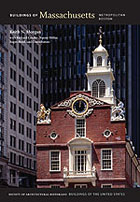
Buildings of Massachusetts: Metropolitan Boston
Keith N. Morgan; Richard M. Candee, Naomi Miller, and Roger G. Reed, contributing editors (2009)
Buildings of Massachusetts: Metropolitan Boston represents a new way of envisioning the built environment of Boston and the greater Boston area. Although Boston entries are still organized by familiar city regions such as Government Center or Beacon Hill, neighborhoods such as Jamaica Plain or South Boston, and outlying towns such as Lexington, Lincoln, or Waltham, the book also considers the more recent built environment, including entries focused on various portions of the Route 128 corridor.
Keith N. Morgan; Richard M. Candee, Naomi Miller, and Roger G. Reed, contributing editors (2009)
Buildings of Massachusetts: Metropolitan Boston represents a new way of envisioning the built environment of Boston and the greater Boston area. Although Boston entries are still organized by familiar city regions such as Government Center or Beacon Hill, neighborhoods such as Jamaica Plain or South Boston, and outlying towns such as Lexington, Lincoln, or Waltham, the book also considers the more recent built environment, including entries focused on various portions of the Route 128 corridor.
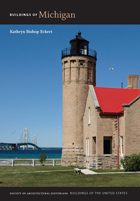
Buildings of Michigan
Kathryn Bishop Eckert (revised, 2012)
This revised edition of Buildings of Michigan (first published in 1993) by Kathryn Eckert presents the architecture of the Upper and Lower peninsulas of Michigan. From the nineteenth century to the green and sustainable buildings of the twenty-first century, this book covers the full spectrum of high-style and vernacular architecture and the building materials particular to the state.
Kathryn Bishop Eckert (revised, 2012)
This revised edition of Buildings of Michigan (first published in 1993) by Kathryn Eckert presents the architecture of the Upper and Lower peninsulas of Michigan. From the nineteenth century to the green and sustainable buildings of the twenty-first century, this book covers the full spectrum of high-style and vernacular architecture and the building materials particular to the state.
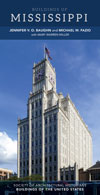
Buildings of Mississippi
Jennifer V. O. Baughn and Michael W. Fazio. With Mary Warren Miller (2021)
As Eudora Welty observed, "One place understood helps us know all places better." Nowhere is this more apropos than in her home state of Mississippi. Although accounts of its architecture have long conjured visions of white-columned antebellum mansions, its towns, buildings, and landscapes are ultimately far more complex, engaging, and challenging. This guidebook surveys a range of such locations, from Native American mounds and villages to plantation outbuildings that bear witness to the lives of enslaved African Americans, from twentieth-century enclaves built for sawmill workers and oil tycoons to neighborhoods that bolstered black Mississippians during segregation, and from the vernacular streetscapes of small towns to modern architecture in Greenville, Meridian, Jackson, and Biloxi.
Jennifer V. O. Baughn and Michael W. Fazio. With Mary Warren Miller (2021)
As Eudora Welty observed, "One place understood helps us know all places better." Nowhere is this more apropos than in her home state of Mississippi. Although accounts of its architecture have long conjured visions of white-columned antebellum mansions, its towns, buildings, and landscapes are ultimately far more complex, engaging, and challenging. This guidebook surveys a range of such locations, from Native American mounds and villages to plantation outbuildings that bear witness to the lives of enslaved African Americans, from twentieth-century enclaves built for sawmill workers and oil tycoons to neighborhoods that bolstered black Mississippians during segregation, and from the vernacular streetscapes of small towns to modern architecture in Greenville, Meridian, Jackson, and Biloxi.
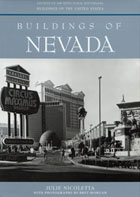
Buildings of Nevada
Julie Nicoletta (2000)
Although dominated by its wild and dramatic landscape, Nevada boasts both colorful human history and a rich – and fascinating – architectural heritage. Buildings of Nevada catalogues the best of the state’s built environment. Ranging across every part of Nevada, from the desert south to the green shores of Lake Tahoe in the north and everywhere in between, Buildings of Nevada is a comprehensive, informative tour of one of America’s fastest growing and most rapidly changing states.
Julie Nicoletta (2000)
Although dominated by its wild and dramatic landscape, Nevada boasts both colorful human history and a rich – and fascinating – architectural heritage. Buildings of Nevada catalogues the best of the state’s built environment. Ranging across every part of Nevada, from the desert south to the green shores of Lake Tahoe in the north and everywhere in between, Buildings of Nevada is a comprehensive, informative tour of one of America’s fastest growing and most rapidly changing states.
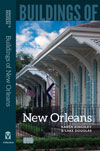
Buildings of New Orleans
Karen Kingsley and Lake Douglas (2018)
This detailed guidebook to New Orleans architecture—an authoritative, comprehensive, post–Hurricane Katrina overview of buildings, neighborhoods, and landscapes—tells a compelling and fascinating story of the city through concise descriptions of nearly 300 significant structures, open spaces, and lesser-known places, enhanced by 175 photographs and 23 maps. Conveniently organized into thirteen neighborhood tours, two road trips into nearby parishes, and three excursions up and down the Mississippi River along the historic Great River Road, and enlivened by nine sidebars highlighting everything from renowned authors, cuisine, and jazz to public markets, green spaces, and historic preservation, the volume clearly shows how various architectural styles, land uses, economic conditions, social customs, and cultural factors merge to create the community’s unique flavor.
Karen Kingsley and Lake Douglas (2018)
This detailed guidebook to New Orleans architecture—an authoritative, comprehensive, post–Hurricane Katrina overview of buildings, neighborhoods, and landscapes—tells a compelling and fascinating story of the city through concise descriptions of nearly 300 significant structures, open spaces, and lesser-known places, enhanced by 175 photographs and 23 maps. Conveniently organized into thirteen neighborhood tours, two road trips into nearby parishes, and three excursions up and down the Mississippi River along the historic Great River Road, and enlivened by nine sidebars highlighting everything from renowned authors, cuisine, and jazz to public markets, green spaces, and historic preservation, the volume clearly shows how various architectural styles, land uses, economic conditions, social customs, and cultural factors merge to create the community’s unique flavor.
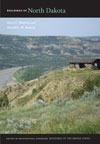
Buildings of North Dakota
Steve C. Martens and Ronald H. L. M. Ramsay (2015)
For many people outside the state, North Dakota conjures visions of a remote, sparse, and seemingly inhospitable landscape, replete with ghost towns, scattered farmsteads, and settings reminiscent of the movie Fargo. Yet beyond this facile image lies a spectacular array of high-style, vernacular, ethnic, and modern buildings, a pragmatic architecture that reflects the setting and settlers of the Great Plains. This volume, with more than 400 entries illustrated by 250 photographs and 17 maps, provides the first comprehensive overview of the state, from Pembina and Walhalla to the Badlands.
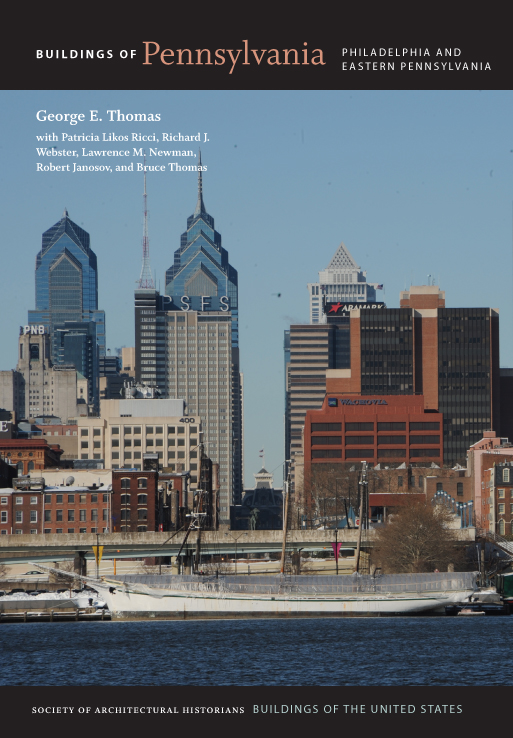
Buildings of Pennsylvania: Philadelphia and Eastern Pennsylvania
George E. Thomas with Patricia Likos Ricci, Richard J. Webster, Lawrence M. Newman, Robert Janosov, and Bruce Thomas (2010)
This latest volume in the SAH Buildings of the United States series follows the Pennsylvania migration narrative: Philadelphia and its surrounding counties of the original quaker settlement zone, the Piedmont and German agricultural zone, the Scots-Irish frontier beyond the Blue Mountain, the coal country with its trade connections to New York City and its East European coal miners, and the Norther Tier claimed and settled by New Englanders.
George E. Thomas with Patricia Likos Ricci, Richard J. Webster, Lawrence M. Newman, Robert Janosov, and Bruce Thomas (2010)
This latest volume in the SAH Buildings of the United States series follows the Pennsylvania migration narrative: Philadelphia and its surrounding counties of the original quaker settlement zone, the Piedmont and German agricultural zone, the Scots-Irish frontier beyond the Blue Mountain, the coal country with its trade connections to New York City and its East European coal miners, and the Norther Tier claimed and settled by New Englanders.
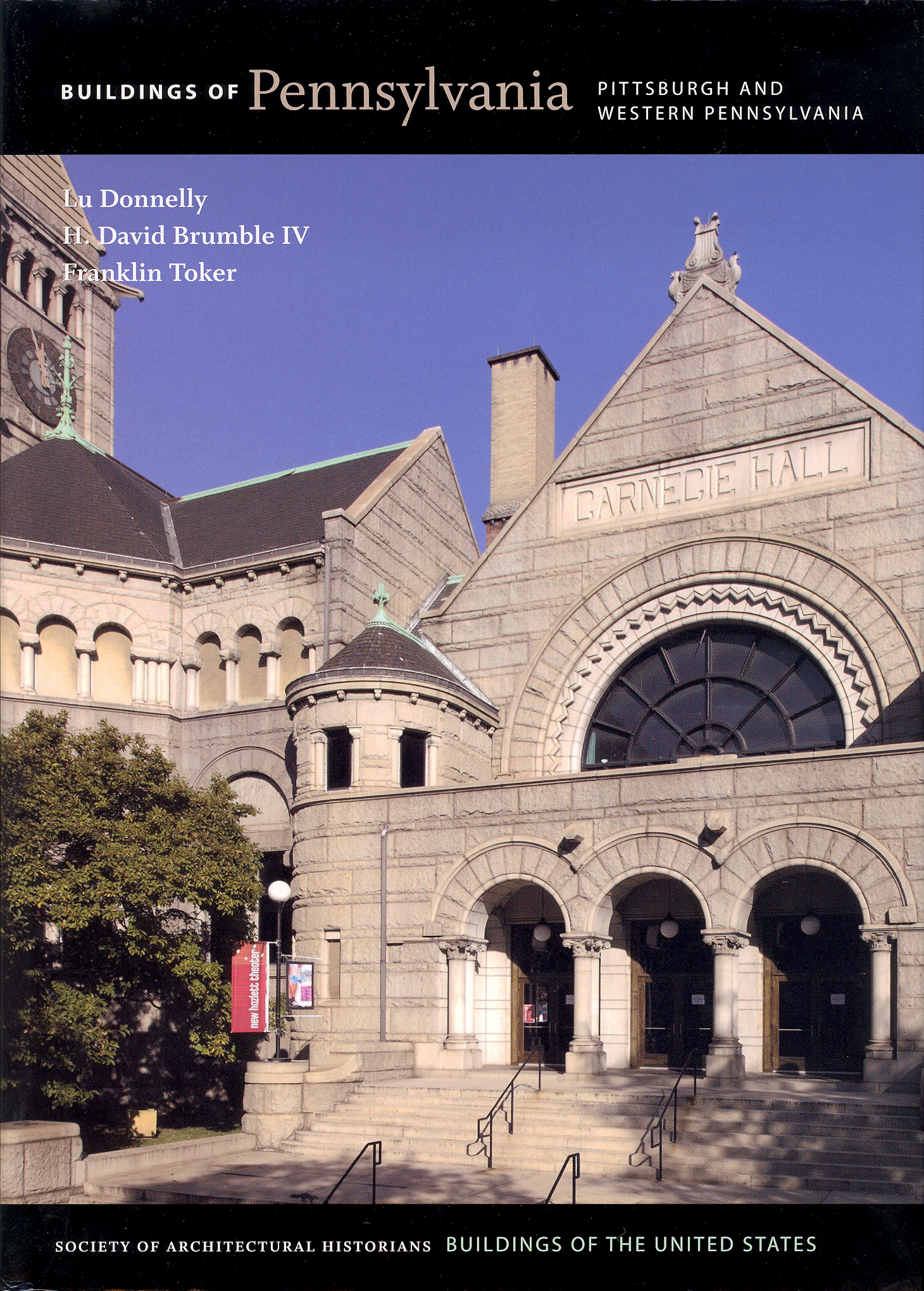
Buildings of Pennsylvania: Pittsburgh and Western Pennsylvania
Lu Donnelly, H. David Brumble IV, and Franklin Toker (2010)
Buildings of Pennsylvania: Pittsburgh and Western Pennsylvania considers the architecture, landscape, and town plans of thirty-one counties west of Blue Mountain and north to Lake Erie, including cities and communities big and small, from Pittsburgh, Beaver Falls, Johnstown, and Altoona to Bellefonte, State College, Lock Haven, Clarion, and Erie, and scores of places in between.
Lu Donnelly, H. David Brumble IV, and Franklin Toker (2010)
Buildings of Pennsylvania: Pittsburgh and Western Pennsylvania considers the architecture, landscape, and town plans of thirty-one counties west of Blue Mountain and north to Lake Erie, including cities and communities big and small, from Pittsburgh, Beaver Falls, Johnstown, and Altoona to Bellefonte, State College, Lock Haven, Clarion, and Erie, and scores of places in between.
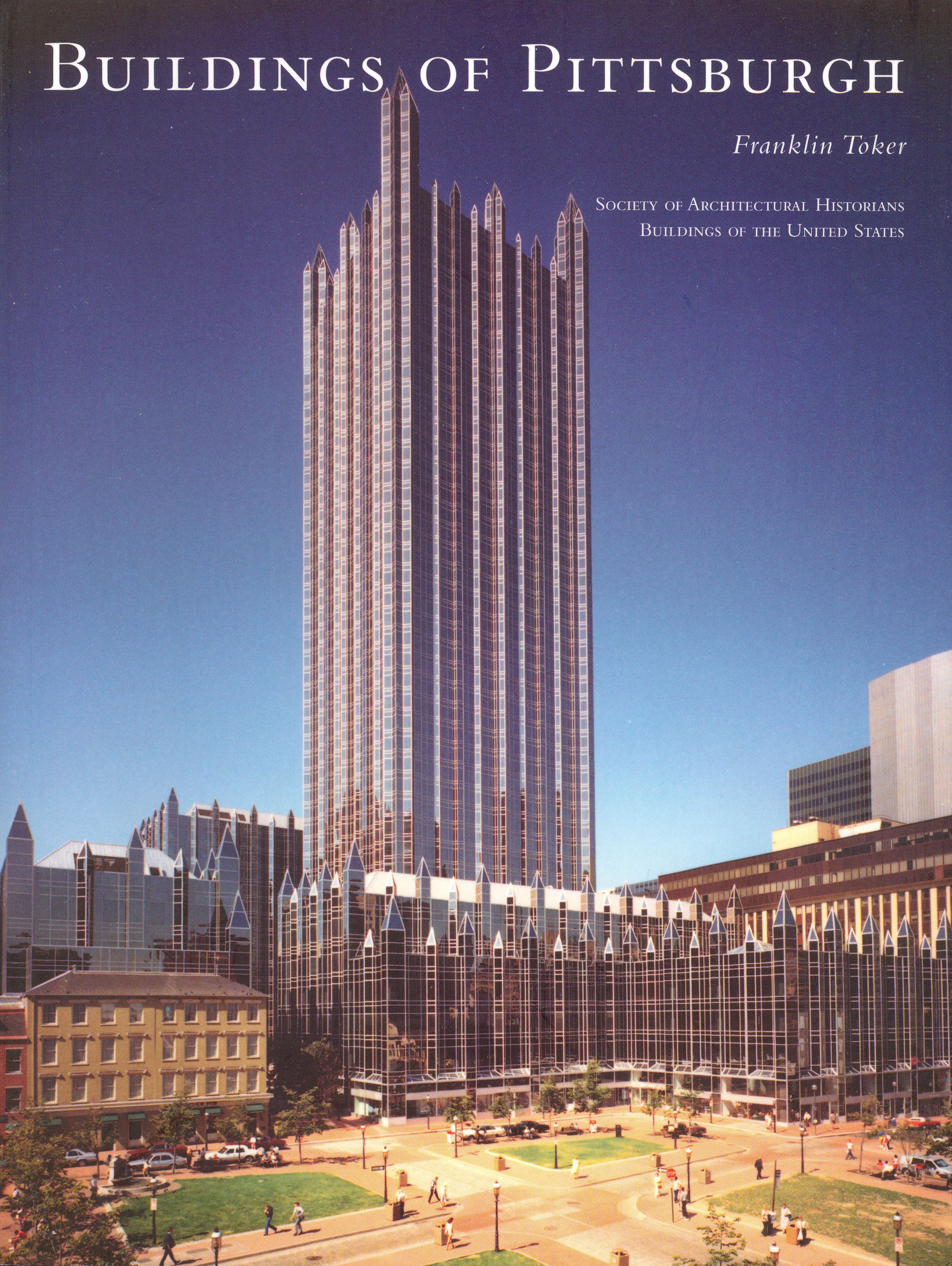
Buildings of Pittsburgh
Franklin Toker (2007)
At the forefront of national and international change, Pittsburgh has long been portrayed as a place for innovative architecture. From its origins as a fort built in 1753 at the urging of a twenty-one-year-old George Washington, through its industrial boom, and into contemporary times, when it has become a pioneer for the ideals and philosophy of environmentally friendly architecture, the city has a history of development that exemplifies the transformative nature of America's built environment.
Franklin Toker (2007)
At the forefront of national and international change, Pittsburgh has long been portrayed as a place for innovative architecture. From its origins as a fort built in 1753 at the urging of a twenty-one-year-old George Washington, through its industrial boom, and into contemporary times, when it has become a pioneer for the ideals and philosophy of environmentally friendly architecture, the city has a history of development that exemplifies the transformative nature of America's built environment.
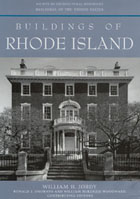
Buildings of Rhode Island
William H. Jordy; Ronald J. Onorato and William McKenzie Woodward, contributing editors (2004)
Rhode Island is the smallest state in the Union: slightly more than 1,200 square miles, 14 percent of which is taken up by the waters of Narragansett Bay. Yet this tiny enclave contains one of the richest concentrations of important historical architecture to be found anywhere in the United States.
William H. Jordy; Ronald J. Onorato and William McKenzie Woodward, contributing editors (2004)
Rhode Island is the smallest state in the Union: slightly more than 1,200 square miles, 14 percent of which is taken up by the waters of Narragansett Bay. Yet this tiny enclave contains one of the richest concentrations of important historical architecture to be found anywhere in the United States.
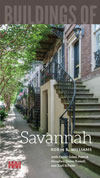
Buildings of Savannah
Robin B. Williams, with David Gobel, Patrick Haughey, Daves Rossell, and Karl Schuler (2016)
While Savannah's famous urban plan is rightly renowned in many studies of urban history, what brings streams of tourists and architects to the city, and daily engages residents with its fascinating history, are not abstract principles of urban planning but a compelling fabric of buildings interacting with and shaping their built or natural settings. Buildings of Savannah, the first city guide from the Society of Architectural Historians' Buildings of the United States series, is a comprehensive, authoritative, and up-to-date guide to that dynamic built environment.
Robin B. Williams, with David Gobel, Patrick Haughey, Daves Rossell, and Karl Schuler (2016)
While Savannah's famous urban plan is rightly renowned in many studies of urban history, what brings streams of tourists and architects to the city, and daily engages residents with its fascinating history, are not abstract principles of urban planning but a compelling fabric of buildings interacting with and shaping their built or natural settings. Buildings of Savannah, the first city guide from the Society of Architectural Historians' Buildings of the United States series, is a comprehensive, authoritative, and up-to-date guide to that dynamic built environment.
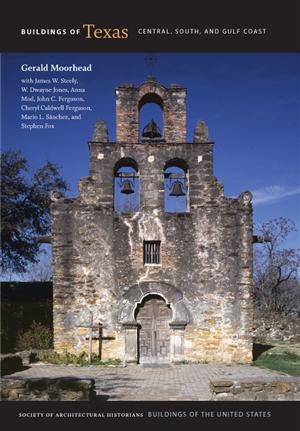
Buildings of Texas: Central, South, and Gulf Coast
Gerald Moorhead, with James W. Steely, W. Dwayne Jones, Anna Mod, John C. Ferguson, Cheryl Caldwell Ferguson, Mario L. Sánchez, and Stephen Fox (2013)
This award-winning book, the first of two volumes devoted to the Lone Star State, covers the central, southern, and Gulf Coast regions (the earliest areas of Spanish and Anglo settlement and the majority of the counties that won independence from Mexico in 1836) and includes four major cities--Austin, Corpus Christi, Houston, and San Antonio. More than 1,000 building entries canvass the most important and representative examples of Spanish missions, log cabins, German stone houses, Victorian courthouses, Moderne stores, contemporary ranch houses, modern skyscrapers, postmodern retail strips, and incursions by internationally renowned architects.
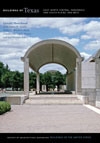
Buildings of Texas: East, North Central, Panhandle and South Plains, and West
Gerald Moorhead, with James W. Steely, Willis C. Winters, Mark Gunderson, Jay C. Henry, and Joel Warren Barna (2019)
From Paris to Odessa, Goodnight to Marfa to Langtry, and scores of places in between, the second of two towering volumes assembled by Gerald Moorhead and a team of dedicated authors offers readers a definitive guide to the architecture of the Lone Star State. Canvassing Spanish and Mexican buildings in the south and southwest and the influence of Anglo- and African American styles in the east and north, and covering the cities of Dallas, Fort Worth, Amarillo, Lubbock, Midland, and El Paso, the latest book in the Buildings of the United States series serves both as an accessible architectural and cultural history and a practical guide.
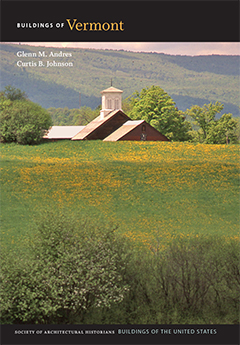
Buildings of Vermont
Glenn M. Andres and Curtis B. Johnson (2014)
Most picture Vermont with handsome barns overlooking rolling pastures, white country churches punctuating hillsides of blazing maples, and small villages clustered around gracious greens. While not inaccurate, this image does little justice to the architectural richness of a state that retains so significant a variety of building types, landscapes, and historic environments that it was declared a national historic treasure by the National Trust for Historic Preservation. Buildings of Vermont looks beyond the stereotypes to explain the remarkable range, quality, humanity, and persistence of a built landscape that has a compelling appeal to visitors and residents alike.
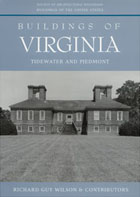
Buildings of Virginia: Tidewater and Piedmont
Richard Guy Wilson & Contributors (2002)
Home to many of the founding fathers and early political leaders of the nation, focal point of the Confederacy, and at various times a financial, industrial, commercial, and suburban center, Virginia claims its architecture as its greatest artistic and cultural legacy.
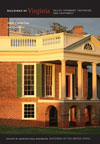
Buildings of Virginia: Valley, Piedmont, Southside, and Southwest
Anne Carter Lee and contributors (2015)
This second of two volumes devoted to the Old Dominion encompasses five regions (Shenandoah Valley, Allegheny Highlands, Piedmont, Southside, and Southwest Virginia), comprising 55 counties and 20 of the state's independent cities. More than 1,250 building entries document the commonwealth's history from prehistory to early settlement, through the Civil War, Reconstruction, Massive Resistance, and the civil rights movement, up to the present day. The book canvasses a range of places, including Thomas Jefferson's Poplar Forest, Woodrow Wilson's Presidential Library, Roanoke's modernist Taubman Museum of Art, Shenandoah National Park and the Blue Ridge Parkway, and the Robert Russa Moton Museum in Prince Edward County (set in a high school which factored in the case for racial integration in U.S. public schools that led to Brown v. Board of Education).
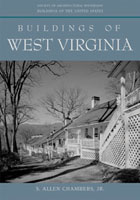
Buildings of West Virginia
S. Allen Chambers, Jr. (2004)
West Virginia, site of John Brown's raid on Harper's Ferry and a child of the Civil War, is almost alone of all the states in having representations of architecture and engineering on its state seal. Yet, perhaps in part because of the diversity that formed them, West Virginia's architectural history and engineering heritage have not been fully explored and assessed until now.
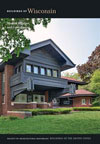
Buildings of Wisconsin
Marsha Weisiger and Contributors (2017)
From Milwaukee to Madison, Racine to Eau Claire, La Crosse to Sheboygan, and scores of places in between, tradition and progressivism have shaped Wisconsin's architectural landscape. This volume showcases noteworthy and representative sites across the state's six major regions and seventy-two counties. More than 750 entries canvass the entire Midwestern mosaic, including Frank Lloyd Wright masterpieces, the extraordinary Basilica of St. Josaphat, Yerkes Observatory, Old World Wisconsin, the quirky Wisconsin Concrete Park and Dickeyville Grotto, Aldo Leopold's "shack," grand theaters, breweries, lighthouses, Northwoods retreats, octagon houses, round barns, and much more.


